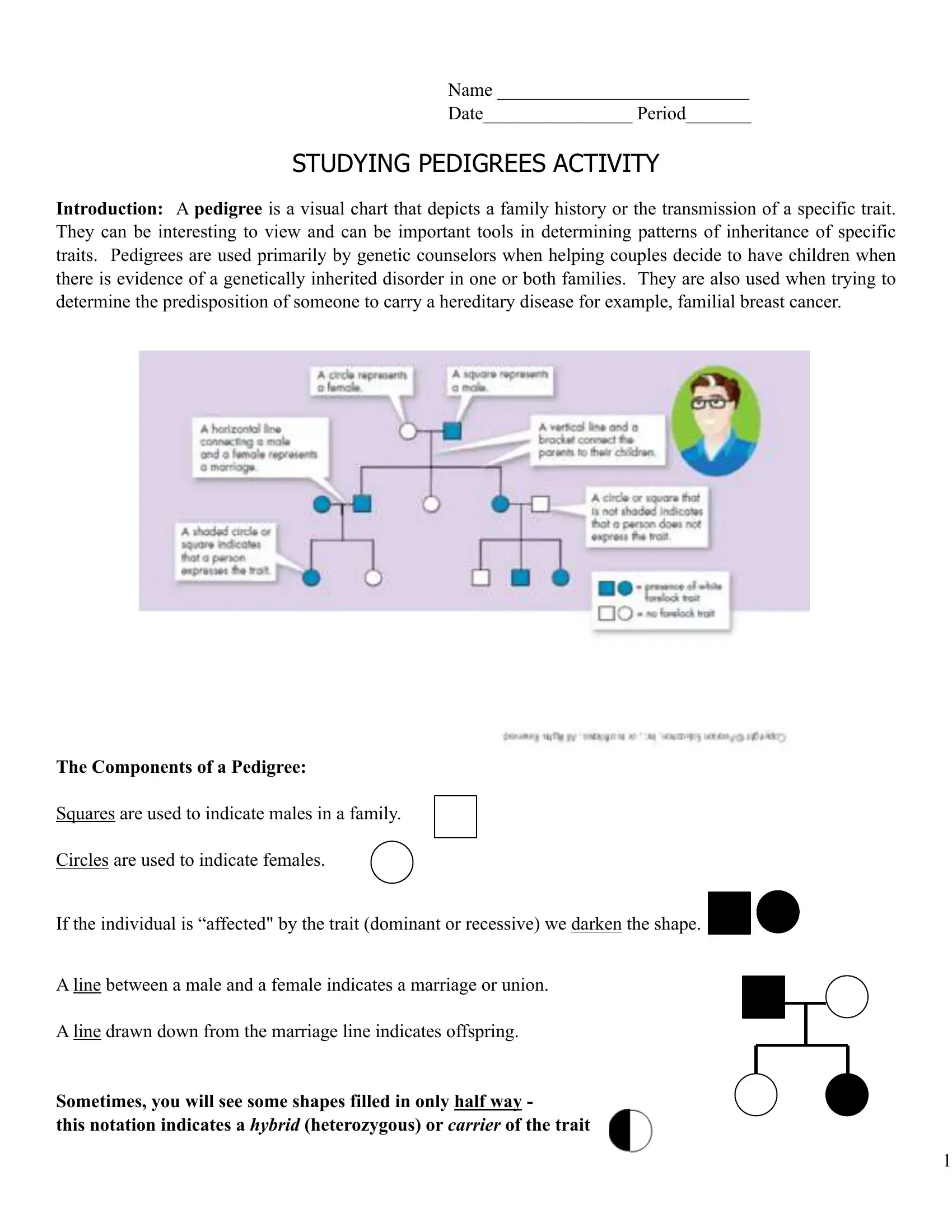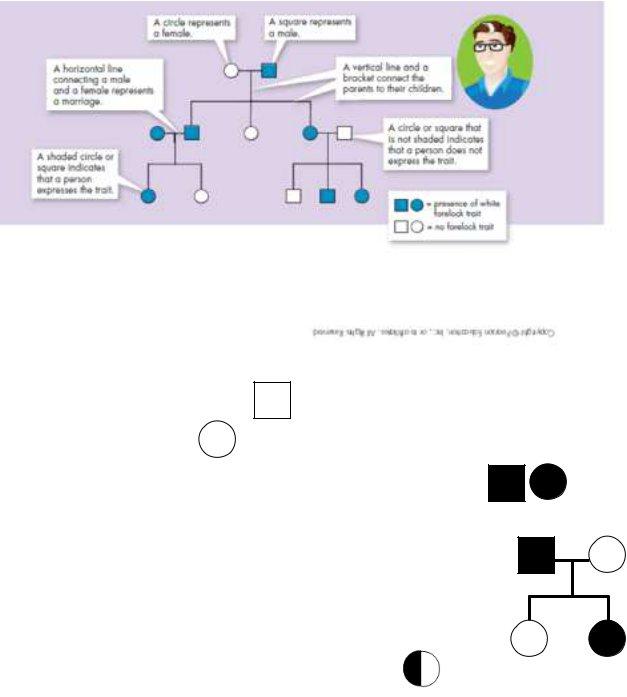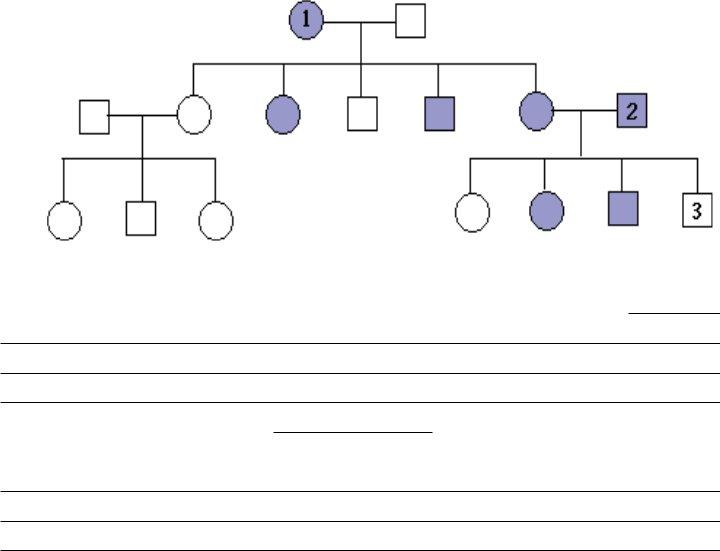By using the online editor for PDFs by FormsPal, you can complete or edit iowa genealogy pedigree forms here. FormsPal team is dedicated to providing you with the best possible experience with our tool by consistently presenting new functions and upgrades. With all of these improvements, working with our tool gets easier than ever! To begin your journey, take these easy steps:
Step 1: Hit the "Get Form" button above. It'll open up our editor so you could start filling out your form.
Step 2: This editor allows you to modify your PDF in a variety of ways. Modify it with customized text, adjust original content, and place in a signature - all within a couple of mouse clicks!
This document will require some specific information; to guarantee correctness, remember to adhere to the next recommendations:
1. You will need to fill out the iowa genealogy pedigree forms accurately, therefore take care while filling out the segments that contain these blanks:
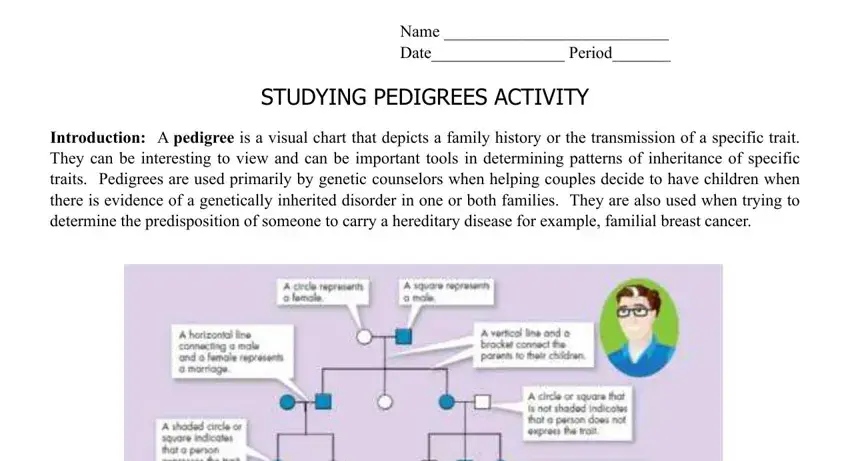
2. After filling in this step, head on to the subsequent step and complete the necessary details in all these blanks - NOTE In a pedigree the trait of, A female, A marriage, A person who expresses the trait, A person who does not express the, A connection between parents and, How many generations are shown, Assuming the chart above is, What is the most likely genotype, and What is the most likely genotype.
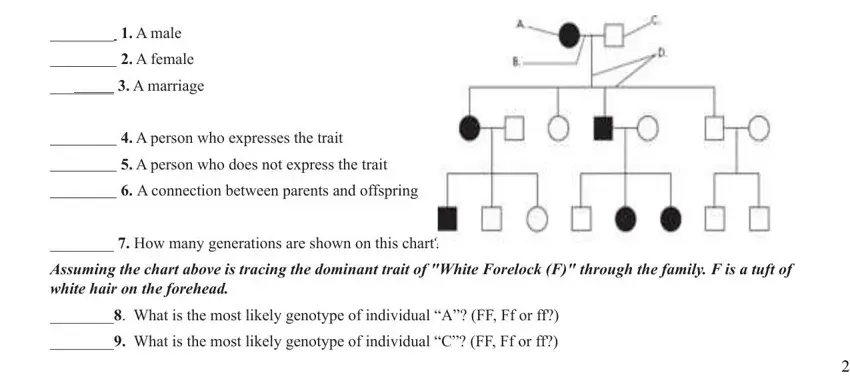
Be really mindful when completing What is the most likely genotype and What is the most likely genotype, as this is where most users make some mistakes.
3. Completing Analysis Questions To answer is essential for the next step, make sure to fill them out in their entirety. Don't miss any details!
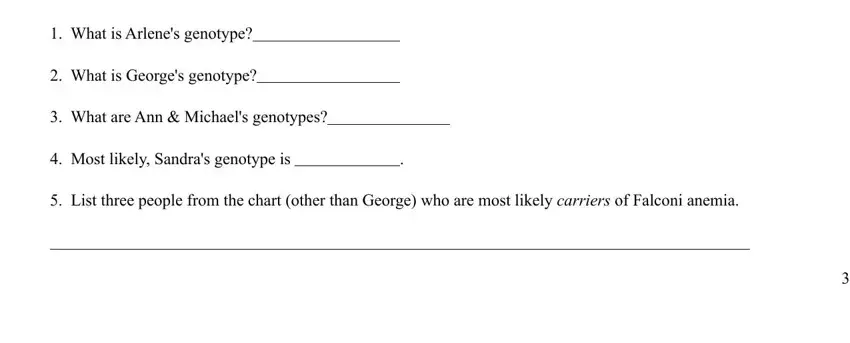
4. This fourth section comes next with these particular empty form fields to complete: Analysis Questions Is, What is the genotype of, and Can you be sure of the genotypes.
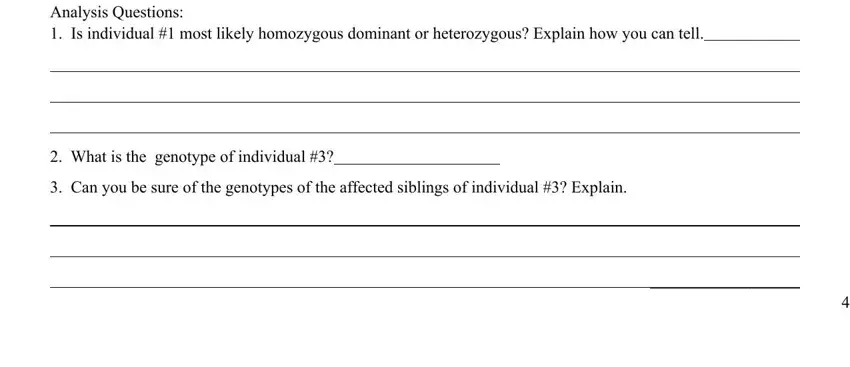
Step 3: Before finalizing this form, ensure that all blanks are filled in the correct way. Once you are satisfied with it, click “Done." Right after getting afree trial account here, it will be possible to download iowa genealogy pedigree forms or send it via email without delay. The PDF file will also be easily accessible in your personal cabinet with your every single edit. FormsPal is devoted to the privacy of our users; we make certain that all personal data going through our system is secure.
